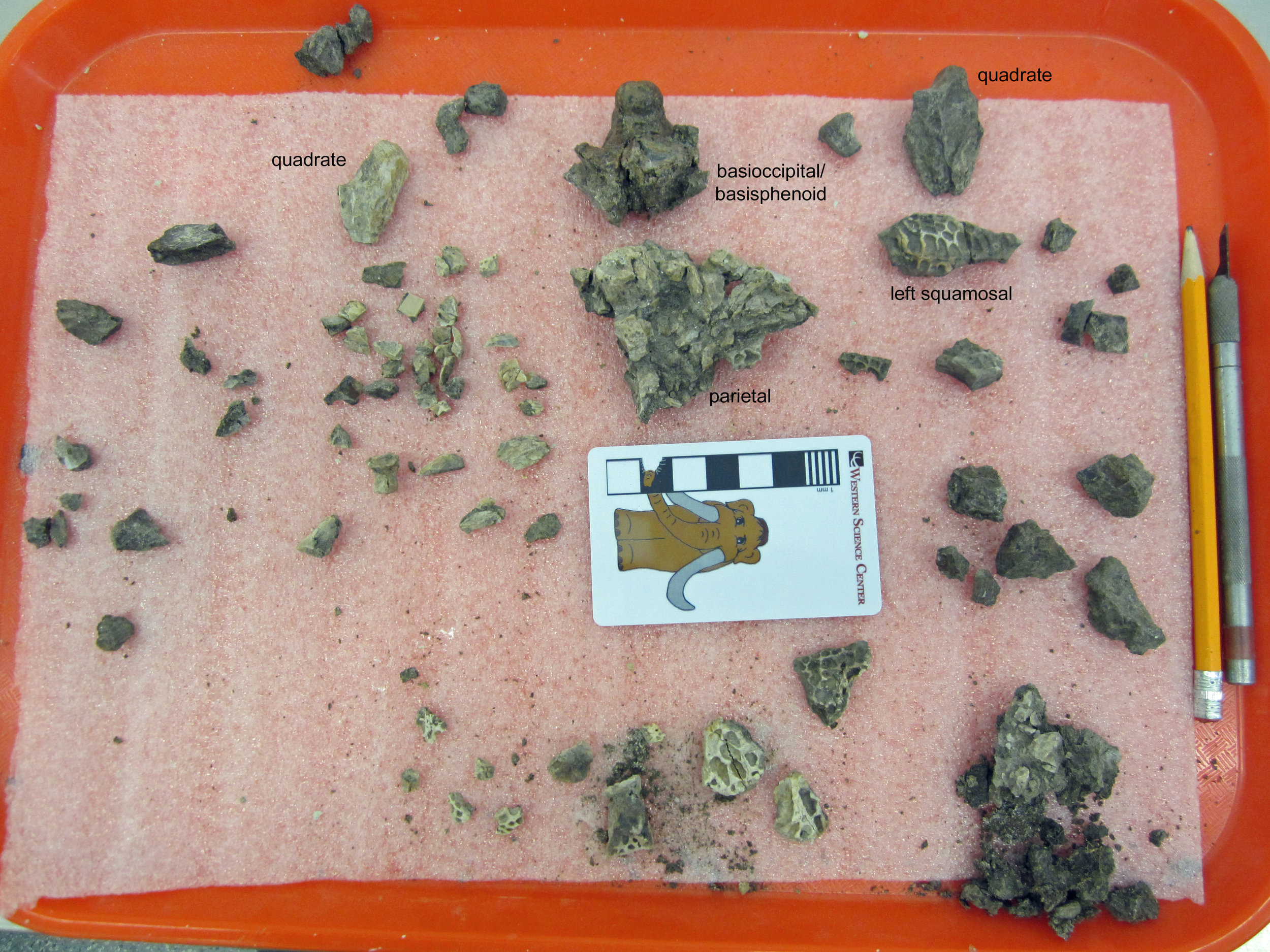 For Fossil Friday today, I want to give you an update on one of the fossils we collected in New Mexico last year. On December 14, 2018, I posted the smashed up skull of a small crocodile from the Menefee Formation, around 79 million years old.At the time, we had just removed this little skull from its plaster jacket. Although broken apart by erosion, from the deeply pitted texture of the bones and presence of the occipital condyle (the ball at the back of the skull that articulates with the first neck vertebra), it was clear that this is indeed a small crocodile skull. In order to piece it back together, the bone fragments would need to be removed from the surrounding rock. However, it appeared that none of the fragments had moved too far from their original positions. Therefore, it was important to have a record of the condition of the fossil before preparation began.To that end, WSC Educator Brett Dooley scanned the fossil with our NextEngine laser scanner, and Director Alton Dooley created a digital 3D model. We then printed it on one of the museum's 3D printers. We also took photographs of the fossil. Using the printed replica and photos as a guide, WSC lab volunteer Joe Reavis has been teasing the bone fragments from the rock in order to clean them and fit them together. As of now, the mass of bone fragments has been disassembled, and Joe and I have been able to start fitting pieces together and identifying the bones.The bones represent much of the back end of the skull, including bones that surrounded the brain (parietal, basisphenoid, and basioccipital with the occipital condyle), bones from the adjacent skull roof (left squamosal), and the bones with which the lower jaw would have articulated (the left and right quadrates). There is much work still to do, but once finished, this little skull will be a nice addition to our knowledge of the Menefee Formation's crocodiles. We hope to be able to reconstruct this region of the skull and determine to which species this specimen belongs.Post by Curator Dr. Andrew McDonald
For Fossil Friday today, I want to give you an update on one of the fossils we collected in New Mexico last year. On December 14, 2018, I posted the smashed up skull of a small crocodile from the Menefee Formation, around 79 million years old.At the time, we had just removed this little skull from its plaster jacket. Although broken apart by erosion, from the deeply pitted texture of the bones and presence of the occipital condyle (the ball at the back of the skull that articulates with the first neck vertebra), it was clear that this is indeed a small crocodile skull. In order to piece it back together, the bone fragments would need to be removed from the surrounding rock. However, it appeared that none of the fragments had moved too far from their original positions. Therefore, it was important to have a record of the condition of the fossil before preparation began.To that end, WSC Educator Brett Dooley scanned the fossil with our NextEngine laser scanner, and Director Alton Dooley created a digital 3D model. We then printed it on one of the museum's 3D printers. We also took photographs of the fossil. Using the printed replica and photos as a guide, WSC lab volunteer Joe Reavis has been teasing the bone fragments from the rock in order to clean them and fit them together. As of now, the mass of bone fragments has been disassembled, and Joe and I have been able to start fitting pieces together and identifying the bones.The bones represent much of the back end of the skull, including bones that surrounded the brain (parietal, basisphenoid, and basioccipital with the occipital condyle), bones from the adjacent skull roof (left squamosal), and the bones with which the lower jaw would have articulated (the left and right quadrates). There is much work still to do, but once finished, this little skull will be a nice addition to our knowledge of the Menefee Formation's crocodiles. We hope to be able to reconstruct this region of the skull and determine to which species this specimen belongs.Post by Curator Dr. Andrew McDonald
